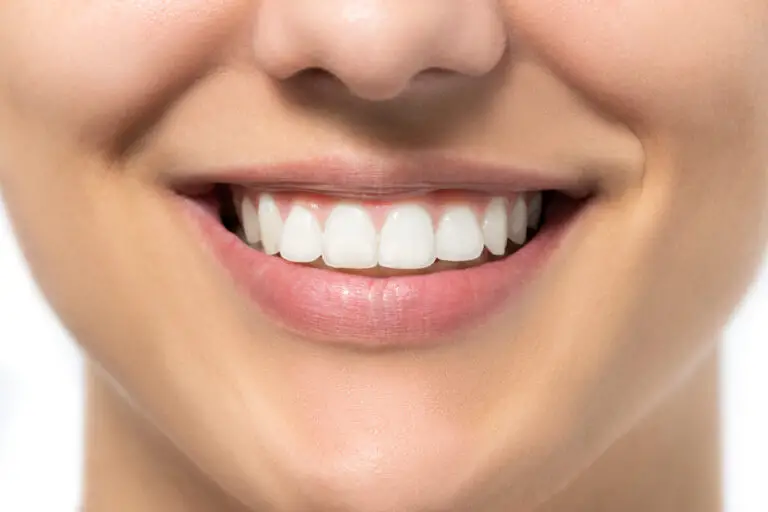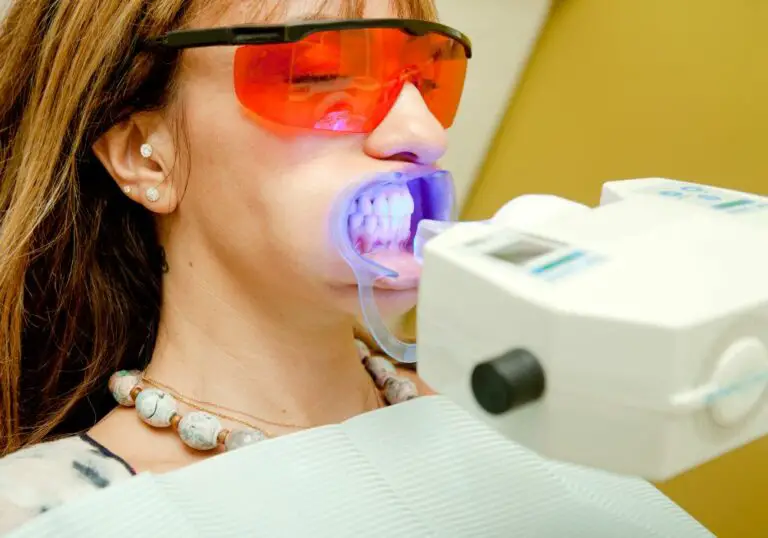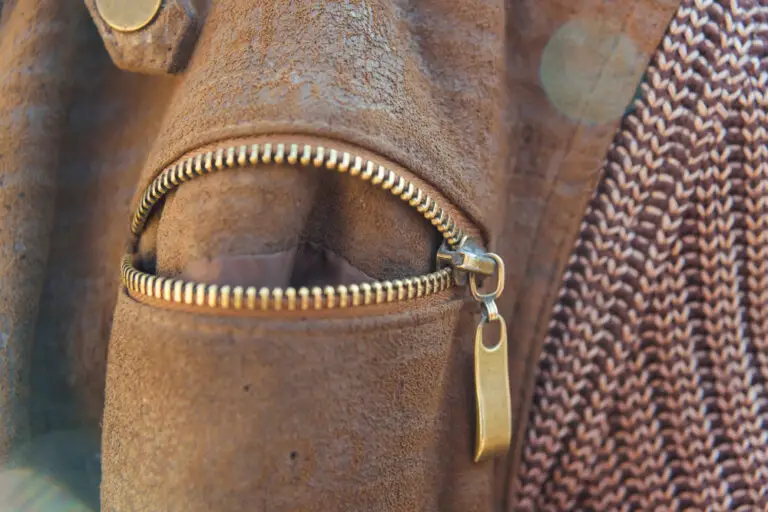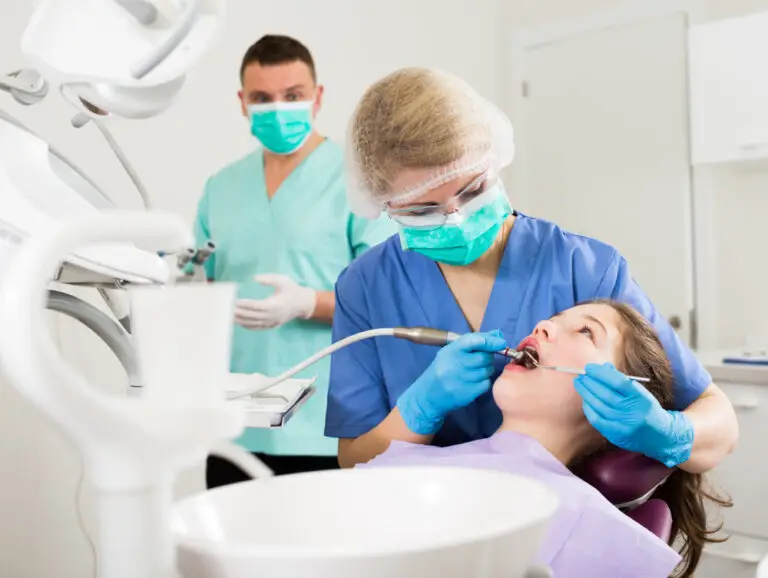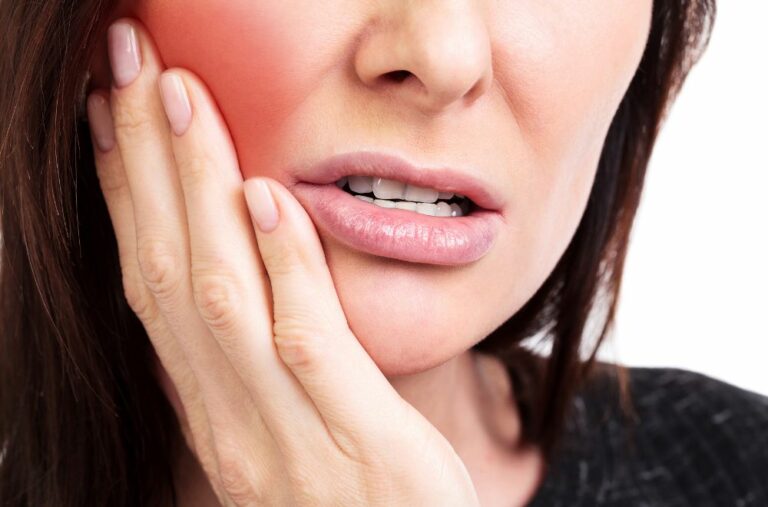Teeth are a critical part of overall health and wellbeing. Our teeth allow us to properly chew and digest food, speak clearly, and smile brightly. Having healthy, attractive teeth impacts self-esteem and quality of life. However, many different factors can damage teeth and lead to decay, erosion, sensitivity, fractures, or even tooth loss. Understanding all the things that can ruin teeth is important for protecting dental health.
Diet and Eating Habits
The foods and beverages we regularly consume have a significant impact on the health of teeth. Certain dietary habits introduce higher risks of enamel erosion, cavities, staining, and other damage over time. Being mindful of how what we eat and drink affects our teeth is essential.
Sugary Foods
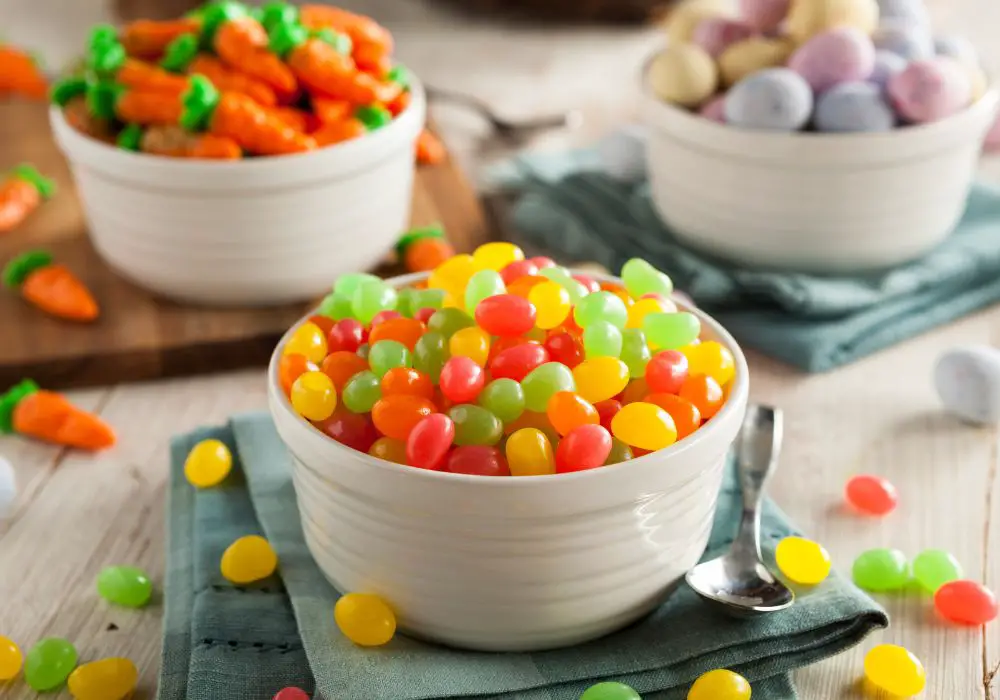
Eating high amounts of sugary foods is likely the biggest contributor to tooth decay. When bacteria inside the mouth break down and digest sugar, they produce acids as a byproduct. These acids eat away and demineralize the enamel coating of teeth. With frequent exposure, acids create tiny pores in enamel and eventually cavities. Sugary foods provide fuel for bacteria to generate enamel-eroding acid.
Examples of sugary foods that can damage teeth include:
- Candy – All types of candy contain sugar that bacteria process into acid. Hard candies like lollipops that stay in mouth longer are especially bad.
- Cookies and cakes – Baked goods like cookies, cakes, muffins, and donuts contain ample added sugar and cavity-causing potential.
- Soda and juice – Soft drinks and fruit juices contain high concentrations of sugar that coats the teeth in cavity-causing acid.
- Sugary cereals – Many breakfast cereals, even those marketed as healthy, have added sugar that can erode enamel. Reading nutrition labels helps identify sugar content.
- Frozen treats – Ice cream, popsicles, and gelatos introduce substantial sugar into the mouth and attack enamel.
- Sugary sauces – Sauces like chocolate or caramel sauce are essentially liquid sugar that cling to teeth long after meals.
- Jams and jellies – Fruity spreads are high in added sugars that penetrate the crevices of molars.
- Dried fruit – While nutritious, dried fruits like raisins, prunes and apricots are sticky and high in sugars that gradually dissolve into acid.
- Sugary yogurt – Many yogurts, especially those marketed toward kids, contain ample added sugars that harm teeth. Seek out unsweetened varieties.
Consuming sugary foods and treats only during mealtimes limits their tooth-decaying potential versus snacking on them throughout the day. When possible, end a meal with cheese, nuts or fibrous fruits and vegetables that help counteract acids and cleanse the mouth after sugary items. Drinking water immediately after consuming sugar instead of more sugary drinks limits damage as well by rinsing away residual sugar and acid. Overall it is wise to minimize sugary foods in the diet for optimum dental health.
Acidic Foods and Drinks

Acidic foods and beverages also contribute to erosion of tooth enamel. Acids essentially dissolve or etch away at the enamel coating of teeth. Over time, this causes thinning, sensitivity, discoloration and structural weakness. Eventually decay forms as acids penetrate deeper through dissolved pores in enamel. Foods with especially low pH levels and higher acidity take the biggest toll.
Examples of acidic food and drinks include:
- Citrus fruits – Fruits like lemons, limes, grapefruit and oranges contain high amounts of citric and ascorbic acid that wear away enamel.
- Tomato based products – Tomatoes, salsa, pasta sauce and ketchup contain acids that gradually erode tooth enamel.
- Vinegar – Vinegar is highly acidic and pickling foods introduces concentrated acid to the teeth. Rinsing with water after eating provides protection.
- Wine – Both red and white wines have enamel eroding potential, more so than beer. Swishing with water helps counteract acids.
- Soda – Carbonated soft drinks are acidic due to phosphoric and citric acid content. Diet sodas with artificial sweeteners promote even more decay as bacteria cannot digest them.
- Sports drinks – Drinks like Gatorade have citric acid and erosive potential, especially if sipped steadily versus only after intense activity.
- Fruit juice – While nutritious, juice concentrates the acidity and sugars of fruit, amplifying its cavity-causing effects.
- Coffee and tea – While unsweetened varieties are less harmful, all are slightly acidic. Rinsing after helps neutralize acids.
Paying attention to pH levels provides guidance on the most enamel-eroding items. In general, lower pH foods and drinks below 5.5 are more damaging so consume in moderation and rinse afterwards with water. Avoid steady sipping of acidic drinks and swish or chew sugar-free gum after eating to generate saliva that remineralizes enamel. When possible, balance out acidic foods with alkaline options like vegetables, nuts and cheese that stimulate neutralizing saliva production.
Sticky Foods

Sticky foods that adhere and cling to tooth surfaces also contribute to decay. Food particles left stuck to teeth allow bacteria prolonged time to feast on leftovers and produce enamel-damaging acid. Sticky foods essentially provide a continual food source for bacteria. Acids then have extended opportunity to penetrate enamel.
Some examples of sticky foods that cling to teeth include:
- Dried fruit – Raisins, prunes, dried apricots and banana chips fuse to grooves and pits of teeth. Their high sugar content also feeds bacteria.
- Sticky candies – Caramels, toffees, gummy bears/worms, and sour candies stick to teeth, coat them, and take longer to clear off surfaces.
- Nut butters – Nut butters like peanut, almond, and cashew butter cling to the palate and grooved surfaces of molars.
- Granola and cereal bars – Loaded with sugars and oats, granola bars stick persistently and pack decay causing potential.
- Soft breads – Soft breads like Hawaiian rolls or doughy bagels saturate with saliva and adhere to the teeth longer than crusty breads.
- Dried pasta – Noodles andpastas fuse to teeth and provide carbs to fuel bacteria. Rinsing promptly after eating helps dislodge pieces.
- Marshmallows – Light, fluffy marshmallows saturate with saliva and cling to teeth persistently, especially around braces.
- Soft, sticky candies – Gummies, fruit snacks, jelly beans, and licorice tend to glue to tooth crevices and linger there feeding bacteria.
Rinsing with water right after consuming sticky foods helps wash away pieces still stuck to surfaces. Swishing mouthwash loosens adhered particles through its antibacterial action. Chewing sugar-free gum after eating generates saliva flow to naturally cleanse teeth. Waiting at least an hour to brush after acidic foods allows time for enamel to reharden before abrasive brushing. Being mindful of sticky foods allows you to offset potential damage.
Crunchy and Hard Foods
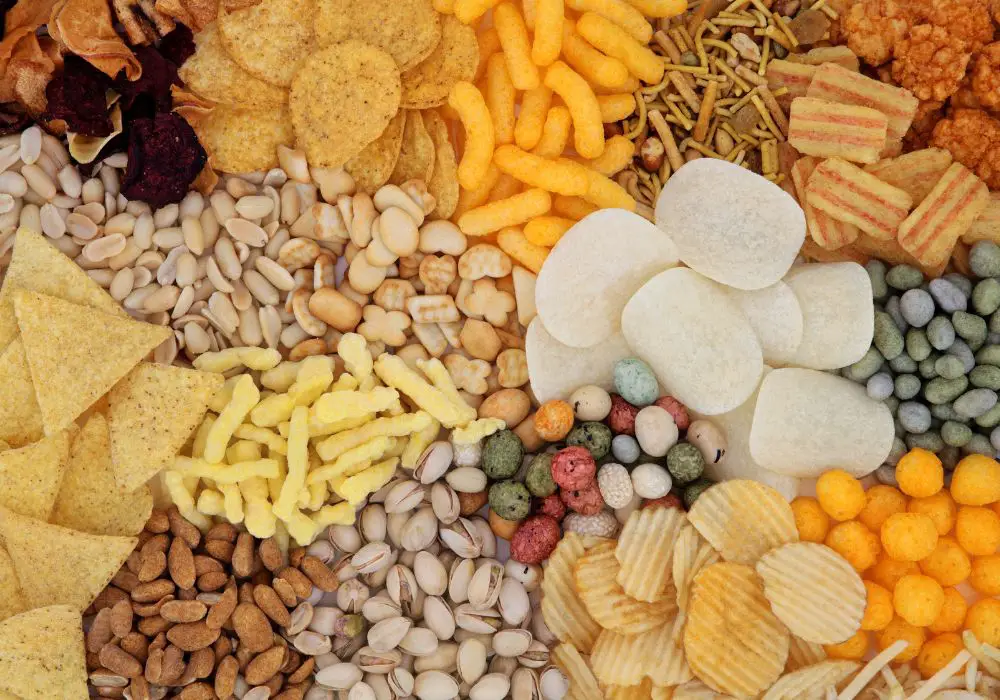
While not necessarily detrimental for those with intact healthy teeth, extra hard, crunchy, and chewy foods can possibly crack, fracture, or break teeth with underlying defects or past dental work. These foods introduce high compressive biting forces that concentrate intense pressure in small areas. They require considerable chewing force that taxes dental restorations.
Some examples of hard foods that demand vigorous chewing include:
- Hard candies – Jawbreaker candies, lollipops, and hard mints require repeated concentrated biting force that stresses teeth.
- Ice cubes – Hard ice concentrates intense pressure as it is chewed and cracked.
- Raw carrots and celery – Raw crunchy vegetables like carrots and celery require prolonged vigorous chewing that exerts force on teeth.
- Almonds and seeds – Hard nuts like almonds and seeds like pumpkin or sunflower stress teeth with their firm shells.
- Unpopped popcorn kernels – Biting down on unpopped popcorn can crack teeth with their concentrated hardness.
- Chewy breads – Tearing off pieces of chewy bread demands grasping and pulling motions that could loosen teeth or restorations.
- Beef jerky – Tough, dried meats like jerky require prolonged, vigorous chewing to break down.
- Hard pretzels and crackers – Dense pretzels and crackers like rice cakes tax dental materials as they are crunched apart during chewing.
Those with dental restorations like fillings, crowns, bridges, and veneers should be especially cautious with such foods. Defective restorations or underlying cracks and fractures are vulnerable to further damage when subjected to concentrated forces from hard food chewing. Avoiding sticky taffies, hard nuts, and crunching on ice reduces risks of injury.
Frequent Snacking
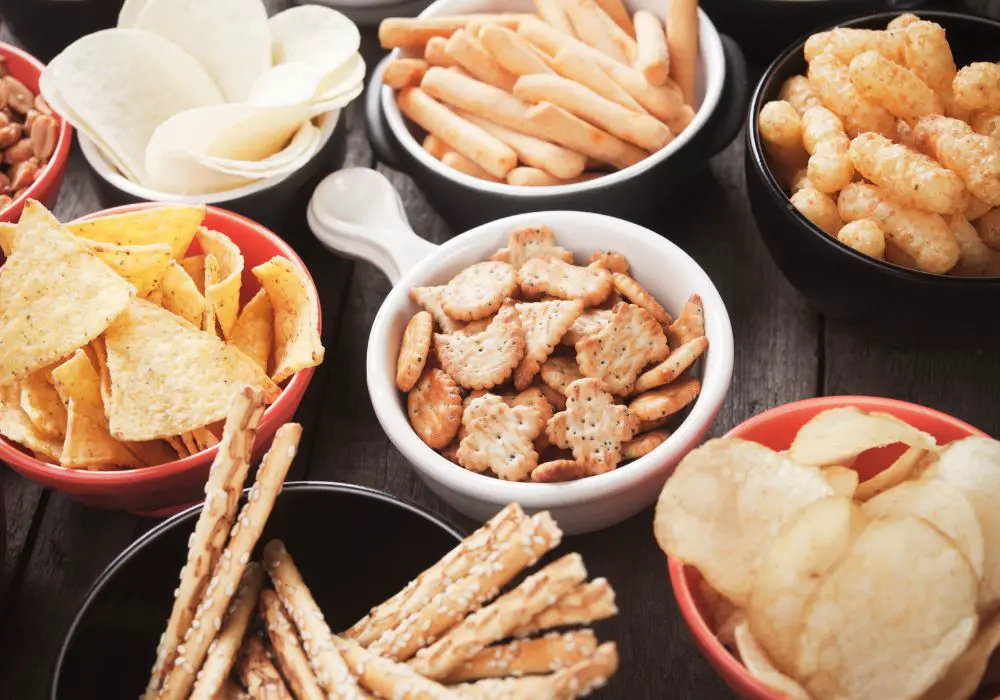
Grazing frequently on sugary or acidic snacks and treats throughout the day keeps teeth coated in acid and under prolonged bacterial attack. When sugary foods are continually introduced, populations of bacteria thrive and proliferate. Prolonged acid production bathes teeth and assures repeated enamel damage without respite. Sticky foods cling longer, feeding bacteria well after the snack is gone.
Constant snacking provides no period of remineralizing rest for enamel between acid attacks. Nutritious whole foods like fruits, vegetables, nuts and cheeses may not seem significantly harmful. But even these natural foods can erode enamel if eaten steadily throughout the day versus just at meals.
It is far better for dental health to limit eatings to set meal times. When snacks are enjoyed, quickly rinsing with water helps wash away food and neutralize lingering acids. Drinking water or milk are safe choices between meals rather than continual snacking. Allowing teeth prolonged rest periods between acid attacks prevents progressive enamel decay. Setting boundaries on snacking frequency reduces risk of enamel erosion and cavities.
Poor Oral Hygiene
Inadequate oral hygiene that fails to consistently disrupt plaque is another major factor leading to tooth decay and eventual destruction. Plaque that remains and builds up directly damages enamel and provides fuel for bacteria to generate acid harm after meals. Maintaining daily effective brushing and flossing habits is essential to prevent progressive oral health decline.
Infrequent Brushing
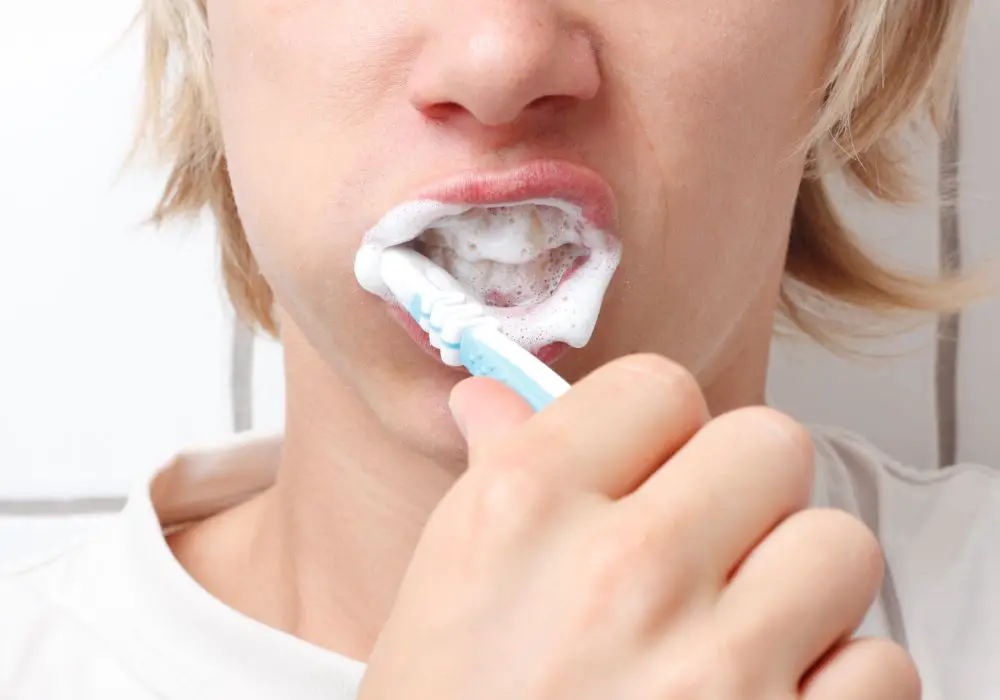
Brushing too seldom or skipping days without brushing allows bacteria-rich plaque to build, harden, and firmly coat the teeth. Gradually this plaque calcifies into tartar that stains the teeth yellow and serves as a veritable bacteria farm next to the teeth. Acids generated continuously soften and decay the enamel. Infrequent brushing assures development of cavities, tooth decay and eventual tooth loss over time.
Brushing properly twice per day disrupts plaque before it can accumulate into harmful tartar. Setting a routine helps establish regular brushing habits critical for removing bacteria near the teeth. If unable to brush after a meal, rinsing thoroughly with water washes some bacteria away to buy time until the next brushing. But brushing at least twice maximizes plaque disruption and is recommended for preventing decay.
Inadequate Brushing
Even brushing daily may still be inadequate if proper technique and time spent is insufficient to disrupt plaque. Rushing through a quick scrub fails to remove bacteria completely from every tooth surface. Critical areas are missed if brushing is not methodical with adequate time spent on inner, outer, top and bottom surfaces. These overlooked areas harbor bacteria to produce acids after meals.
Using too old and ineffective toothbrush bristles also hampers plaque removal. Soft rounded bristles work best to penetrate grooves. Worn out bristles merely move bacteria around versus removing it. Applying too much or overly vigorous pressure can erode enamel instead of clean it. Proper brushing technique and spending at least two minutes achieves maximum plaque removal.
Infrequent Flossing

While brushing cleans exposed front, back, and top surfaces, dental floss is critical for disrupting plaque from between teeth and just under the gum line. These areas pack tightly with bacteria. Infrequent flossing allows that bacteria to thrive into damaging tartar inside gum pockets. Professional cleanings cannot access and clear this tartar between teeth.
Flossing sweeps away clinging food, disrupts growing plaque colonies, and delays tartar formation in vulnerable areas. For complete oral care, flossing daily is as important as diligent brushing. Failing to floss assures decay and gum disease between teeth over time.
Sharing Oral Hygiene Tools
Sharing items like toothbrushes with family members or roommates easily spreads bacteria around the mouth. Certain bacteria and viruses that cause problems like gingivitis are extremely contagious through saliva contact. Using someone else’s toothbrush or even sharing the same cup or utensils allows quick infection of the gums or decay-causing bacteria to infest the teeth.
Maintaining all personal oral hygiene tools and avoiding sharing items helps prevent communicable bacteria from taking hold in the mouth and damaging gums and teeth. Anytime a toothbrush is shared inadvertently, it should be promptly replaced with a new one to prevent reinfection.
Habits and Behaviors
Certain habitual behaviors can wreak havoc on dental health over time. While behaviors like smoking or nail biting may seem unrelated to oral health, many introduce risks that gradually impair teeth. Breaking damaging habits preserves tooth integrity and function.
Tobacco use
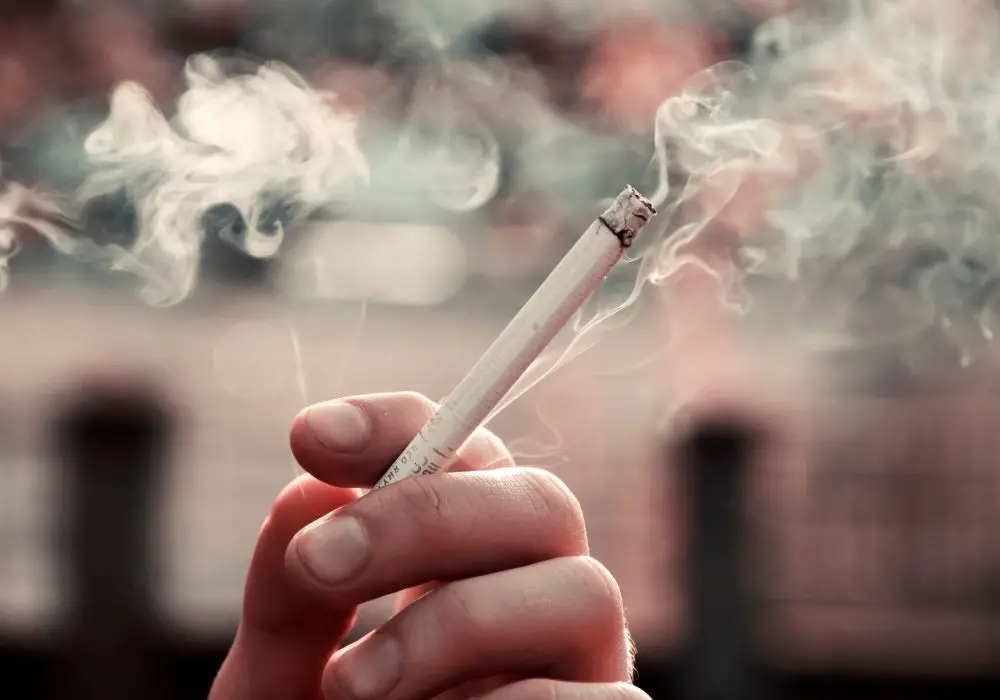
Any form of smoking significantly raises risks of progressive dental decline. Both cigarettes and chewing tobacco stain teeth and promote enamel erosion. Smoke drying out the mouth reduces protective saliva flow. Tobacco greatly increases risks of gum disease, leukoplakia, and oral cancer. But progressive enamel erosion and tooth staining also damage smile appearance and accelerate cavities.
The heat of smoking makes the mouth environment less hospitable to beneficial bacteria but more welcoming to the harmful types. Smoking impairs healing after dental procedures and may contribute to implant failures or complications with bridges and dentures. Pursuing smoking cessation provides widespread health and dental benefits.
Teeth grinding and clenching
Excessive teeth grinding or clenching places imbalanced pressures on teeth and accelerates wear. During clenching or bruxism, upper and lower teeth slide forcefully against each other laterally. This abrades enamel away through enamel-to-enamel grinding contact. Clenching also stresses the temporomandibular joint behind the jaw.
Over time, chronic grinders abrade their teeth down to stumps with fractured edges and uneven damage. Clenching wears down teeth as the faces slope into each other forming a wedge shape. Protective night guards cushion this force during sleep. Reducing life stress and pursuing therapy helps manage grinding and prevents accelerating dental damage.
Nail biting and oral habits
Chronic nail biting over time can crack, fracture, or loosen front teeth. The pressure of nails or fingers on the incisal edges of front teeth creates applied torque and rotational force. This damages the periodontal ligaments securing teeth in place making them shift or loosen over time. Fingernails also introduce infection to the mouth from traces of dirt and germs.
Other oral habits like pensively chewing on pencils or ice or using teeth to tear open packages also applies damaging pressures. Employing teeth for tasks other than chewing food risks chipping, breaking, or dislodging teeth. It is wise to break these habits to prevent long-term dental harm.
Poor eating habits
Certain detrimental eating habits jeopardize dental health. Prolonged bottle feeding or allowing infants or toddlers to fall asleep with milk bottles bathes developing teeth in sugars that promote aggressive baby bottle caries. Eating disorders like bulimia that involve chronic vomiting expose teeth to damaging stomach acids. A poor high sugar diet low in fibrous fruits and vegetables deprives the body of needed vitamins and minerals for building strong teeth. Correcting harmful eating patterns is essential for maintaining lifelong dental health.
Insufficient hydration
Inadequate water consumption causes chronic dry mouth that accelerates dental decay. Saliva offers a first line of defense against bacteria and cavity-causing acids. When salivary flow is reduced, its buffering capacity drops. Drinking at least 64 ounces of water daily keeps salivary glands working at full capacity for maximal protection. Staying well hydrated supports the body’s natural ability to cleanse and remineralize teeth.
Medical Conditions
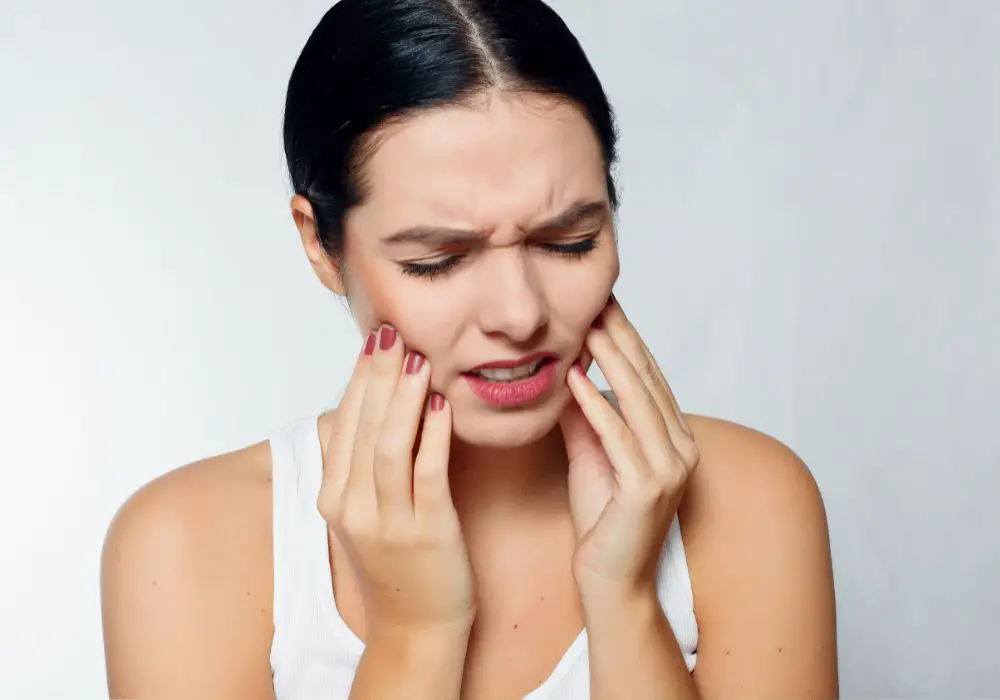
Certain medical conditions, medications, and treatments indirectly compromise dental health as side effects. Being aware of these secondary impacts allows steps to counteract harm.
Acid reflux and gastric disorders
Frequent acid reflux brings stomach acid into contact with teeth and erosive damage occurs. The lower pH of stomach acid compared to the oral cavity chews away at enamel with frequent exposure. Those with gastric reflux or eating disorders have higher acid content contacting teeth. Rinsing with water after reflux episodes counteracts acid and allows enamel to reharden. Chewing sugar-free gum boosts remineralizing saliva. Medications to manage acid reflux helps minimize enamel erosion.
Dry mouth
Many prescription drugs have dry mouth as a side effect. Lack of normal salivary flow allows bacteria and plaque to thrive. Drinking more plain water keeps the mouth hydrated. Chewing sugar-free gum with xylitol generates more saliva as well. Doctors may recommend alternate medications or dosage adjustments if dry mouth persists. Treatment of dry mouth is key to prevent rampant decay.
Bulimia
The chronic binging and purging of bulimia exposes teeth to repeated baths of regurgitated highly acidic stomach contents. Teeth steadily erode under frequent acid contact. Similar enamel loss occurs due to chronic vomiting from other medical conditions as well. Seeking qualified eating disorder treatment helps stabilize vitamin and mineral balance needed for remineralization. Rinsing with baking soda solution neutralizes acids. Dentists apply fluoride varnish to strengthen enamel against acid attacks. Ongoing support provides the best chance of preserving remaining tooth structure.
Cancer treatment
Head and neck radiation therapy as well as some chemotherapy medications impair saliva production, reducing its protective effects. Meticulous oral hygiene and topical fluoride are critical preventives during cancer treatment. Rinsing the mouth prevents pooling of acids and bacteria on the teeth. Drinking plenty of water also keeps tissues hydrated when saliva is diminished.
Vitamin/mineral deficiencies
Deficiencies in vital nutrients like vitamin D, calcium, and phosphorus weaken developing enamel. A well-balanced, nutritious diet supports remineralization and maintenance of strong enamel. Particular attention to diet is prudent for those with deficiencies undergoing orthodontic treatment or other dental procedures.
Frequently Asked Questions
What drink is the worst for your teeth?
Soda and sports drinks are the worst drinks for teeth. Their low pH and high sugar content bathe teeth in double damage. Energy drinks and coffee with added sweeteners also harm teeth.
What foods help rebuild enamel?
Foods high in calcium like yogurt, cheese, sesame seeds, spinach, and milk help strengthen and remineralize enamel. Foods high in phosphorus like meat, eggs, fish, nuts, and beans also contribute to remineralization.
Can chipped teeth be fixed?
Small chips and cracks can be repaired with dental bonding material. More significant chips may require veneers or crowns to restore form and function. See a dentist promptly for fractures or major chips.
Can flossing too hard damage gums?
Yes, flossing too forcefully causes gum recession and abrasions. Use a gentle sawing motion and ease floss down gently between teeth. Avoid snapping floss down which damages gum tissue.
How can you tell if you grind your teeth?
Symptoms of teeth grinding (bruxism) include jaw soreness, dull headaches, worn enamel, teeth fractures or chipping. A dentist may detect abnormal wear patterns on the teeth as well. Using a night guard prevents grinding damage.
Proper prevention and dental care helps minimize damage and maintain the structure and health of teeth for life. Be mindful of habits, diet, and behaviors that introduce risks. See a dentist regularly for cleanings, early detection of problems, and needed treatment. Healthy teeth are possible at any age with the right oral care.

